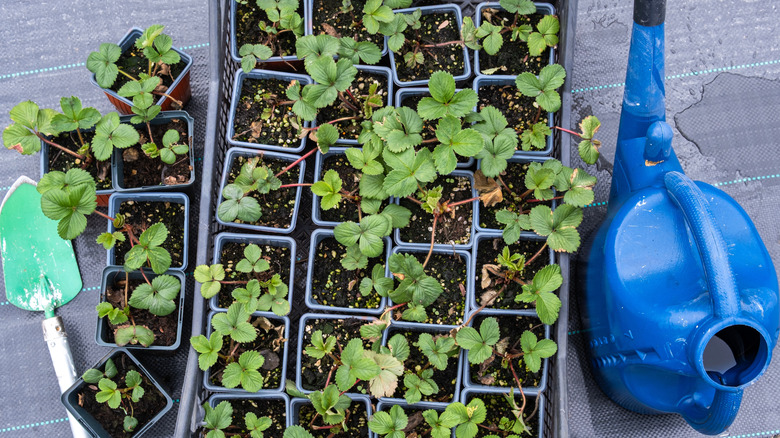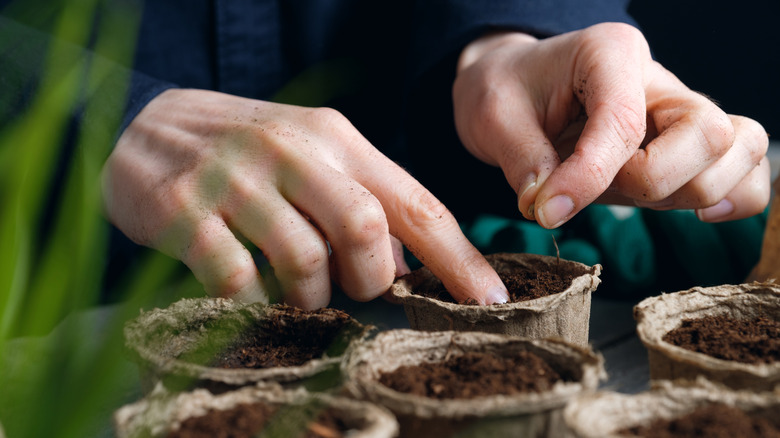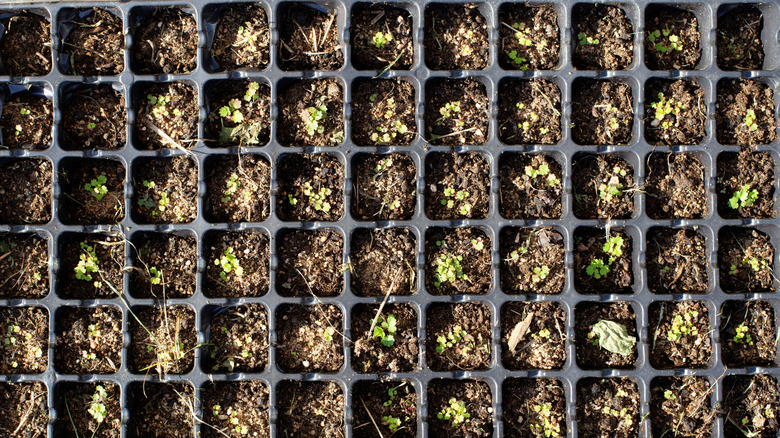How To Germinate Strawberry Seeds (& Common Mistakes To Avoid)
While plenty of gardeners opt to just buy seedlings or dormant bare roots when planting strawberries in their garden, starting the tasty fruit from seed is definitely possible. Whether you decide to start seeds indoors or direct sow them into your garden bed, strawberry seeds need two things to germinate successfully: Exposure to a cold period before you sow them and exposure to plenty of light afterward. The cold period — or, cold stratification — not only boosts the total number of seeds that sprout, but also speeds up the rate of germination.
The same goes for sowing them on the surface of the soil rather than burying them, so that they get lots of light exposure. While most seeds require darkness to germinate, strawberries are the opposite. The seeds will stay dormant until they're exposed to light. Even under ideal conditions, strawberry seeds are difficult to germinate because they've evolved to remain dormant as a survival tactic. In the wild, if only a third or so of available seeds sprout in any given year, the population won't lose its entire seed bank to one bad growing season or natural disaster.
In your garden, this survival tactic makes starting strawberries from seed difficult. Even if you do everything right, you'll still likely only see about 30% of your seeds germinate. So, if you want 10 strawberry plants, sow at least 30 seeds. Then, follow the tips below for cold stratifying and sowing your seeds to improve your odds of getting those 10 plants.
Tips for germinating strawberry seeds
To get the best germination rates for your strawberry seeds, start with around 60 to 85 days of cold stratification. You can do this by placing the seeds in a moist environment (like a damp paper towel) in your fridge. Alternatively, you can try winter seed sowing, where you just sow your strawberry seeds directly outdoors in winter about 60 to 85 days before your last frost date.
If you stratified seeds in the fridge, either direct sow them in your garden come spring or start your seeds indoors. When you're ready to sow them, don't bury the seeds. Simply scatter them on the soil surface. If you need to cover them to prevent critters from eating them, use a thin layer of a light material like vermiculite or peat moss so light can still get through.
Finally, be patient. Strawberry seeds can be slow to germinate, sometimes taking months to see signs of life. And not all seeds will germinate, even if they all went through the same cold stratification and sowing process. For example, seeds that received 83 days of cold exposure only had a germination rate of just 45.5%, according to a USDA study. That was higher than seeds that weren't cold stratified (32%), but still less than half. When you're ready to transplant the seedlings that did germinate, consider scattering the rest of your potting soil with the not-yet germinated seeds in the bed around them. They might sprout in the future.
Mistakes to avoid when starting strawberry seeds
One of the most common mistakes when starting strawberries from seed is skipping the cold stratification step. If you've already sown your seeds in your starting pots or trays, you can simply stick them in the fridge –pots, soil, and all. You may not have time to stratify them for the full 60 days they prefer, but any cold stratification period you can give them should boost germination rates compared to skipping the step entirely.
Another easy mistake to make is sowing the seeds too deeply. Conventional wisdom states that seeds should be sown at a depth equal to twice their width. So, a quarter-inch seed would be planted about a half inch below the surface, for example. But, as mentioned earlier, strawberry seeds need light to germinate. If you've already sown them too deep, you can try digging them back up. But strawberry seeds are tiny. So, it might be easier to simply scoop up the soil and seed together and scatter it across the surface of the bed.
Another mistake that gardeners make is skipping the seed processing steps when trying to grow strawberry plants from store-bought produce. While the seeds on your store-bought fruit can be used to start your own strawberry patch, you can't simply plop a whole strawberry in the ground and wait. You need to mash the berries to separate the seeds from the fruit. Then, rinse them and let them dry for a few weeks before following the germination tips mentioned earlier.


